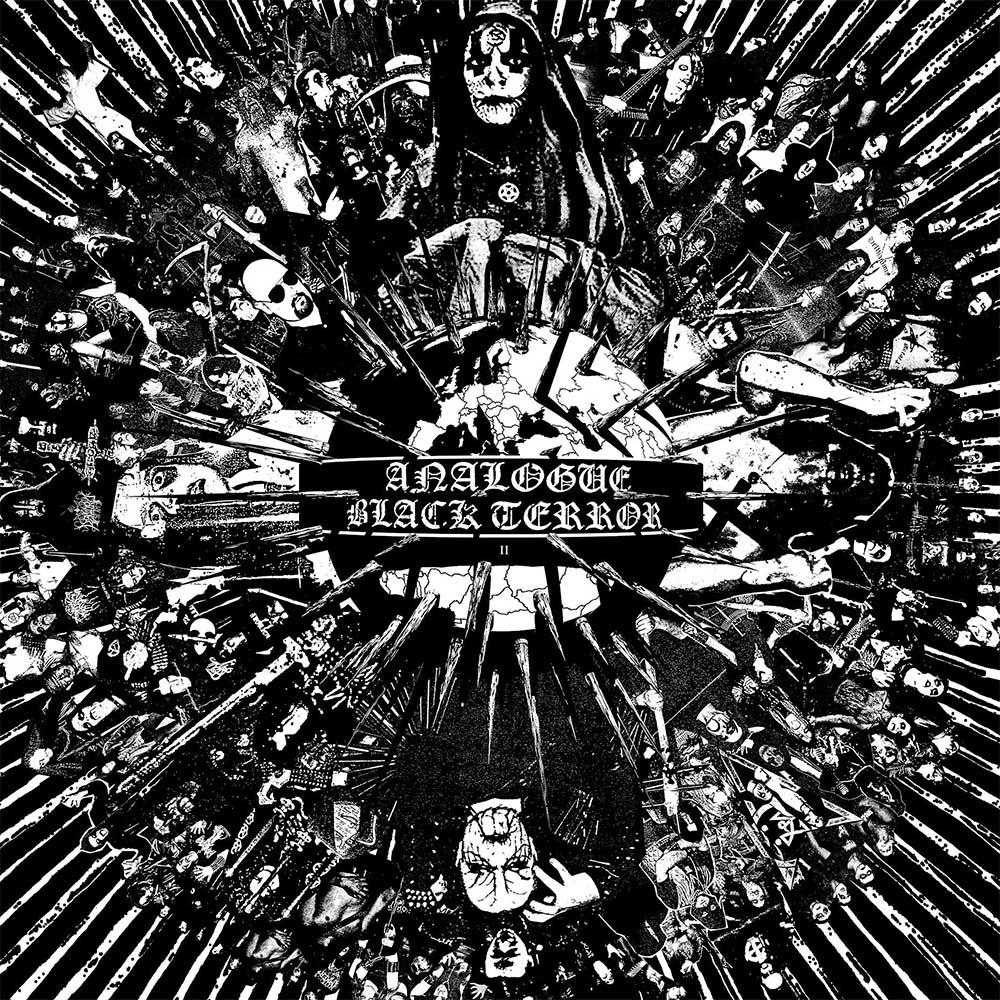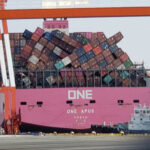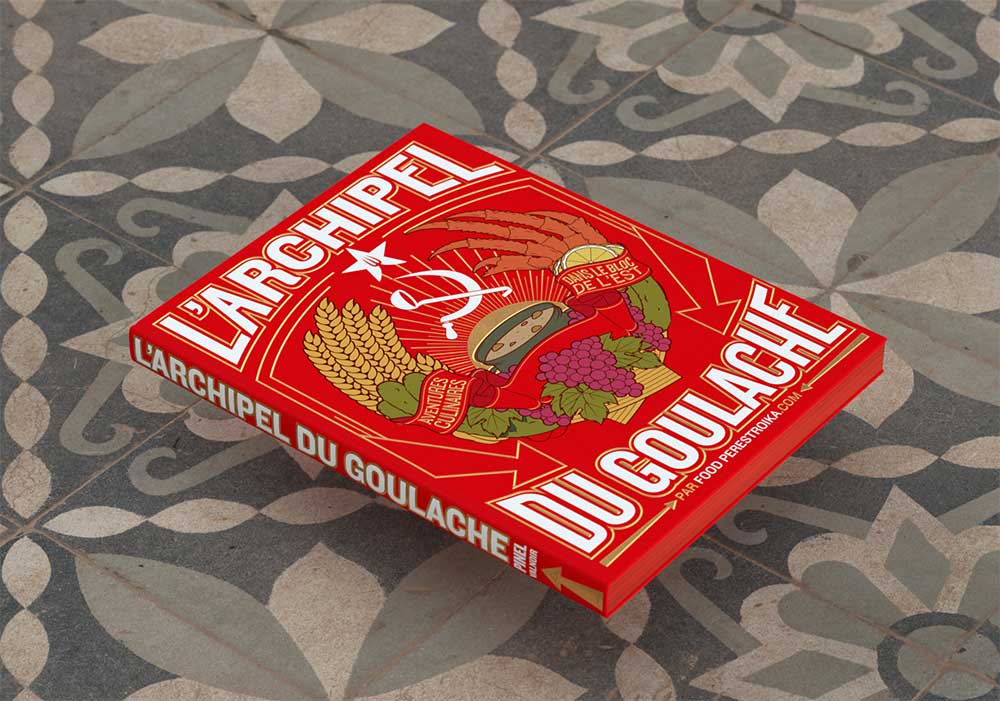Valnoir (Metastazis)
2021-04-21
by Niklas Göransson
Valnoir of Parisian art studio Metastazis discusses his recent book projects: the second volume of Analogue Black Terror as well as a culinary travelogue called The Goulash Archipelago.

– The latest instalment of Analogue Black Terror is filled with an entirely new set of demo-tape inlay cards, spanning from 1981 to the year 2000. The book has the same time-capsule format as Volume 1 had – however, this time its fierce substance is accompanied by complementary text analysis as well as ‘fresh’ illustrations. My decision to follow up the first edition came shortly after its release… perhaps two months? At that point, it was still too early to evaluate the full outcome. Of course, the early enthusiasm we received reassured NWN! that my initiative had found an audience and left Yosuke open to further suggestions. But as for myself, the main motivation came from frustration over all the milestones I’d neglected in the first one. My jigsaw puzzle was riddled with holes! I mean, where is VENOM? What about SODOM? IMMORTAL, MARDUK, and ILDJARN? I had to make things right and create a more complete panorama.
The Analogue Black Terror project – which is avaialble in Europe directly from the author – offers a meticulous chronicling of black metal aesthetics, masterminded by Valnoir and printed in collaboration with Yosuke Konishi of American label Nuclear War Now! Productions. The massive tome that is Volume 2 contains three-hundred pages, fifty more than the first, showcasing 550 documents from more than 370 bands. A few editorial columns serve to introduce the work, provide context, and set the tone. Two of them were written by former Bardo Methodology interviewees: TT of ABIGOR and Tyler Davis of The Ajna Offensive.
– You and I often look in the same direction when considering who remains relevant in terms of sounds coming from the Left-Hand Path, so it is entirely unsurprising that we would meet the same dudes at different parties! My contribution to Analogue Black Terror is compiling a document archive exempt of personal interventions. Therefore, it felt important to deliver introductory contextual intel, as to not barrage the reader with hundreds of uncaptioned demo tapes. As expected, TT delivered a copiously flamboyant brick of radicalism, leaving very few unscathed. His hindsight is definitely one of a kind. That text looks and reads like him, plain and simple. Just as Tyler‘s text looks like Tyler – although I’ve only met him in the flesh twice, fifteen years ago. He’s more quiet and intimate but no less insightful.
Did you hear anything from bands featured in the first?
– I was actually expecting to bump into some issue, seeing as how we didn’t really bother asking for permission from anyone. But a lot of bands I was not in touch with at all – ABSU, for example – turned out to be happy and honoured to have been featured.

What about reader response?
– Very good. While not being an outrageous success, for such a big and expensive book to sell out within one year is very positive. I mean, it’s a highly niched subject matter we’re talking about here, and underground metal enthusiasts are less likely to be attracted to books than records and various merchandising items, right? As far as input goes – besides the publisher himself, this was a ‘no requests’ DJ set. I mean, the fans in our scene are notorious for complaining and whining about things not being made the way they want them to be. But what: I should listen to people now? That would be the end of me. I was never a true believer in democracy anyway.
Did Yosuke have any requests for the second volume?
– Yes – my beloved publisher, Insulter-san, had a few legitimate requests. Firstly, many of the contributions came from his own collection. He was the one who suggested we expand the type of historical documents from demos-only to also include relevant biographies, flyers, and photos. The demos are still the absolute core of the book but – if they’re available – why not connect them with related promotional materials?
Where the first edition was more personal and primarily focused on what matters to Valnoir, the second has a much broader scope.
– Volume 1 was branded by my personal history, no matter how obscure the release. The second presents some recordings that should not be ignored. For example, I’m very satisfied to have re-discovered so much ‘new’ Légions Noires material, as well as DET HEDENSKE FOLK, ISVIND, ILDJARN, STRID, MYSTICUM… and yes, I really enjoy my early-90s Norwegian black metal. I also largely disregarded NSBM this time; we reasoned that they had enough space in the previous effort. For the most part, I personally find this subgenre too musically and intellectually mediocre to be given more room. Sure, it’s important to show that it existed, but equally un-necessary to amplify its artistic value. Which, as far as I’m concerned, is close to zero. Besides a handful of exceptions.
As someone who is also in the business of peddling printed publications, I’ve taken some interest in the production process of Volume 2. To my understanding, it’s been one fraught with mishaps.
– Jesus fucking Christ, if you only knew how many ordeals this book has been subjected to, and still is. First off, we re-printed Volume 1 without major problems. I mean, it’s a black and white book – not exactly rocket science for a big printing house, one would think. Since it went well, we just ordered a set of wet proofs of Volume 2 to make sure the inking was alright. I won’t get into details, as it would kill your readers… but long story short: I naively assumed the printing house would keep the same parameters set-up on their machines for the second volume. But nope. I received two approval copies that were waaaay too dark. I mean, some double spreads came out plain black! With one thousand books printed and ready to go. It took two months of arm-wrestling, invectives, and insults to get them to dump the first printing run and reprint the whole thing. Once this was finally done, I received my three hundred copies here in Paris without issue. But Yosuke’s books? The boat connecting Hong Kong to San Francisco faced the wrath of Poseidon, so to speak.



One day in early December 2020, Yosuke received an email informing him that, quote, ‘Vessel ONE APUS v.006E suffered collapsed containers due to severe weather conditions.’ After losing 1,816 containers overboard – plus damage of varying severity to the remaining cargo – during a storm, the vessel was docked in the Port of Kobe and left in the care of the Japanese Coast Guard. As if the stunned disbelief of reading this announcement wasn’t quite enough, it was accompanied by a set of amazing photos. It occurred to me that they look exactly like one of these ‘Bad day at work?’ memes.
– Yes, the photos certainly speak for themselves. Had we not already invested so much money and effort into this, I would no doubt have found it just as hilarious as you seem to. But, as things stand now, we have seven hundred copies unaccounted for. It’s been three months and the boat is still stuck in Kobe. Those Japanese guys are slow as French slugs on strike – unloading containers one by one, checking the content, ticking boxes, and contacting insurance companies. Pure frustration! So no, we still don’t know if the books are providing Satanic quality reading for the fishes.
What will happen if they are damaged or never found?
– Then I suppose we will have to pray that the shipping company is properly insured so we can – for the third time in a row – reprint the fucking thing and then have it shipped again. Either way, we’re looking at extra months of delay for the American books to finally reach California. At his point, I’m not even sure NWN! will have the courage to put the insurance coin in the machine again, or if they will drop the ball. The latter option would be sad but fully understandable.
I’d appreciate being kept in the loop about this, seeing as how the copy I have in my possession will obviously increase drastically in value if the rest are lost forever. I have ceased browsing until further notice, hoping to preserve it in mint condition for eBay.
– Well, Niklas, considering the massive amount of my blood I spilled on your copy, it can hardly be considered ‘mint’ – especially given the impressive quantities of exotic STDs and other shit I have flowing through my veins. Good luck selling a contaminated book on eBay!
Sadly, my ruse is likely to be less lucrative than initially prospected – the container was retrieved intact shortly after this conversation took place. The books are now on their merry way to the US. Returning to its contents: discussing black metal aesthetics brings us to the mandatory mention of Timo Ketola, a Finnish artist who passed away in October 2020.
– As I’m sure your readers know, the early 2000s saw the appearance of a new so-called ‘orthodox’ wave of black metal bands. At this stage in the movement’s history – after fifteen years of active existence – things had begun turning into a stale circus, especially the Norwegian scene. Consequently, there was an urgent need to re-focus on what really mattered: the message, as well as a creative process free of boundaries. Thus rose in broad darkness Norma Evangelium Diaboli and its satellites. WATAIN, DEATHSPELL OMEGA, FUNERAL MIST, KATHARSIS, ANTAEUS, and similar outfits helped shift the focus back to its essence and started developing a visual representation that was fresh and right on the spot. In my eyes, Timo was in the centre of this frantic energy.
For those who are unfamiliar with his work just by name, Ketola created not only the iconic album covers but also ground-breaking booklet layouts of milestone releases such as FUNERAL MIST’s “Salvation”, WATAIN’s “Casus Luciferi”, and DEATHSPELL OMEGA’s “Si Monvmentvm Reqvires, Circvmspice”. He was also a huge part of establishing the aesthetic identity of bands like KAAMOS and, later, TEITANBLOOD.
– At the exact same period as this went on, I was still a student in the field of graphic design and already furiously intent on carving my own name on the walls of this highly stimulating new era. And I definitely couldn’t ignore Timo, who was one of the main torchbearers, giving a face to those accursed sounds. I wanted to make his vision mine, and I very much looked up to what he was doing. Talking about artists who influenced me back in those days then, yes, Timo was definitely in the top-five – if not number one. Over the years, I managed to carve out my own space, my own room, but I still held Timo in utmost respect. Although our correspondence was infrequent, I always considered him an esteemed colleague. We discussed him writing a text for Volume 2, but he was not always the most responsive character and his positive answer came too late: the book was already being printed.

Valnoir is currently working on another book, one with no less obscure content – it focuses on local cuisine in various strange post-Soviet states. It bears what is perhaps the greatest title I’ve heard in a while, at least for those who catch the reference: The Goulash Archipelago. The concept was born over a decade ago, when Valnoir lived in New York City and spent a lot of time with an old friend by the name of Florian Pinel.
– Florian is a French expatriate who, ever since the late 90s, lives in the Dollar God Jerusalem: Manhattan. Besides his involvement in artificial intelligence and cognitive sciences research, he’s also a hardcore Russophile – obsessed with the Soviet Union – as well as a chef. So, back in those days, we enjoyed discussing at length the wonders of endless post-Soviet shithole republics and their invaluable ancestral cabbage recipes. Eventually, he somehow convinced me to tag along on his adventures across various dictatorships and collapsed democracies of the so-called Eastern Bloc. Our very first trip took us to Ukraine, Georgia, Russia, and… Abkhazia.
Abkhazia is a partially recognised state in the South Caucasus; it’s considered by most countries as part of Georgia, which views the region as occupied territory. In August 1992 – following the fall of the Soviet Union – long-running ethnic conflicts in what was then Georgia’s Abkhazia region came to a head and resulted in a war which, after thirteen months of bitter fighting, was won by the Abkhaz separatists.
– Imagine Tintin’s Syldavian republic with a hilarious flag, but on the French Riviera and filled with Muslims carrying AK-47s, police cars operated by seventeen-year-old kids with no uniforms, wild one-armed bus drivers, and empty government buildings.
Empty, as in abandoned?
– No, it’s much funnier than that: these were officially operating administration buildings. One of them housed the ministry of foreign affairs, where we headed to clear up some visa issues, on the fourth floor. While they actually seemed to be doing something, more or less, the other floors – supposedly occupied by other ministeriums – were…. empty, save for a couple of dusty files on the ground and two chairs floating in otherwise vacant open spaces. Ghost administration in a ghost state.
How did you get along with the locals?
– I shit you not, the first day we received no less than two death threats within one hour. Once because Florian had too many piercings in his face… which is true, admittedly, he does have too many piercings in his face. And then because we were walking up a hill: a vile affront the local boozehead bum decided worthy of slitting our throat for. In fact, he got very vocal about it. We wisely decided against bleeding out in the ditch of a ‘country’ entirely devoid of embassies; instead, we quickly made our way towards the nearest restaurant to join him in drunkenness. And the clear-blue and perfectly tempered sea was, of course, invaded by a million jellyfish. Best weekend ever!
For a significantly more in-depth report, as well as plenty of photos, Florian’s Food Perestroika blog documents the entire escapade.
– Our next adventures covered colourful nations such as Gagauzia, Ossetia, Transnistria, the autonomous republic of Nakchivan, Karabach, as well as a number of places which can actually be found on a map: Russian Lapland, Albania, Moldova, Tajikistan, Azerbaijan, and so on. Sharing all the stories – spanning from intestinal crisis on the Afghan border to getting mugged by Midnight Express-style officers in Uzbekistan – would take too much space and deserve a book of their own. In fact, this is exactly what we decided to do; The Goulash Archipelago is this book. It’s mostly a cookbook based on Florian‘s blog, recipes, and accounts of our adventures. We are now in negotiations with a Swiss publisher for the French version. Hopefully, an English edition will follow. Nowadays, book editing is one of the two main departments I want to develop ’til death – the other being film direction.
Over the last few years, Valnoir has started getting his feet wet in the realm of music videos. He’s already done commissions from non-metal bands such as LAIBACH and PERTURBATOR and is currently working on one for DRUDKH.
– I’ve never really been a fan of music videos myself. In ninety-eight percent of cases, besides rare instances of grace such as DEATHSPELL OMEGA’s “Ad Arma! Ad Arma!”, metal music videos are a depressing pile of crap. I started ‘serious’ experiments in film directing two years ago, using mostly 3D and CGI technologies. Soon enough, I needed some real-life practice to bring challenges to the table and improve my skills. After working for some 250-plus bands, I already had a solid network at my disposal and so decided to follow in the steps of my friend Dehn Sora – who helped me a lot during my learning years and still does, endless gratitude! – and apply my knowledge to music videos. After all, for most of the time, movies are intimately bathed in music. Music videos are a limitless, open genre of expression. Who said you had to dress headbangers in blinking Cyberdog armour and bring them into an abandoned factory to be a music-video director? I won’t spend much space here on hateful comments towards the revolting mediocrity of what I see every day on my YouTube feed, but damn… there’s not enough gasoline on earth to put all that shit to the torch.
Taking LAIBACH as an example – the falling dominos as well as the bullet – was any of that based on existing video footage or still photography?
– No, it’s all one hundred percent digitally generated from scratch. That’s the beauty of the tools I’m using, and this is why it’s so fascinating: you can basically become God and create new worlds, all from the comfort of your desk. As long as you have the will to learn and enough ideas in your brain to feed the machine, there are very few limits to what you can achieve.



